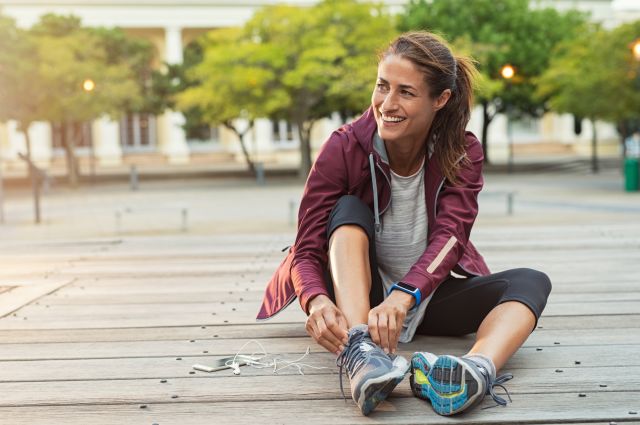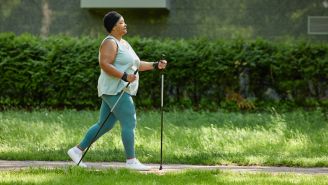Updated on July 13, 2023.
You can roll out of bed and head for a walk wearing practically anything. But you'll be more comfortable—less chafing, no extra fabric flapping around—and maybe more inspired if you dress for it. And the more comfortable you are, the longer you could walk.
Here’s how to equip yourself with the essentials (besides the right shoes) for a satisfying, comfortable walk.
In chilly weather, layer up
Layers keep you warm when you start out and let you peel down when you need to cool off. Begin with a short-sleeved shirt, then pull on something with long sleeves (like a sweatshirt or fleece top) that you can take off and tie around your waist. If the weather's windy or rainy, it’s handy to wear a windproof or water-resistant jacket.
Make it moisture-wicking
In whatever weather—but especially summer heat—the fabric that’s next to your skin should absorb perspiration and help it evaporate quickly. Staying cool and dry can limit chafing and keep you going. Walking, like any sport, involves repetitive motion, so avoid shorts or pants in heavy, stiff, or bulky fabrics that cause friction and can lead to chafing. Nix corduroy or thick sweatpants.
There are a variety of synthetic blends specially made for workout clothes. These include polyester, nylon, spandex, and other sweat-wicking materials. If you’d like clothing made of natural materials, go for merino wool or cocona (which is made from coconut shells). And don’t be dismayed by the word “wool”—merino wool can be very lightweight and perfect for summer walking.
Cotton blends might be okay but avoid pure cotton. It absorbs sweat and becomes wet. It’s also a good idea to steer clear of rayon, modal, and viscose, as they’re just as likely to stay wet, and that’s not comfortable.
To keep your feet drier and help you avoid blisters, make sure your socks are snug-fitting. Avoid wide-ribbed socks and instead opt for those made of smoother materials like merino wool or polyester.
Stay safe
If you're walking when there's not much light, make sure there are reflective stripes, patches, or dots on your clothes and shoes. Carry a flashlight. Hats in bright colors will also help drivers see you.
Whether it’s summer or winter, on bright days, remember your hat, shades, sunscreen, and SPF lip balm. There are special sun protection clothes available online and in many retail stores, as well.
If you’re planning to walk in or around grassy or wooded areas, try to stay in the center of trails or clearings where your legs don’t brush up against foliage or grass. Be sure to treat your boots, shoes, or clothing with products that contain 0.5 percent permethrin, an anti-tick ingredient. It’ll stay effective even after the item has been washed a few times. Use Environmental Protection Agency (EPA)-registered insect repellents that have effective ingredients like DEET and oil of lemon eucalyptus (OLE).
Be prepared
If you’re going for a longer walk or hike where you’ll be heading into nature, think ahead to anything you might possibly need. This includes sufficient water, a portable water filter, a snack, a mobile phone, a first aid kit, a compass, a map, a flashlight, a whistle, and walking poles. If you’d like to be extra prepared, bring a GPS unit, extra food and drink, a small tarp to shelter under, and a Mylar or emergency blanket.
Clothing with enough pockets that zip or buttons that close can help you carry this gear and distribute its weight around your body to prevent pain. A fanny pack, cross-body pack, or backpack with comfortable straps can also help.
Rock your style
Celebrate your commitment to staying in shape with something other than those old gray sweatpants. Good-looking walking clothes come in all shapes, sizes, and price points, and can make you feel great about getting out there. You can even use them to reward yourself for hitting a walking goal.







